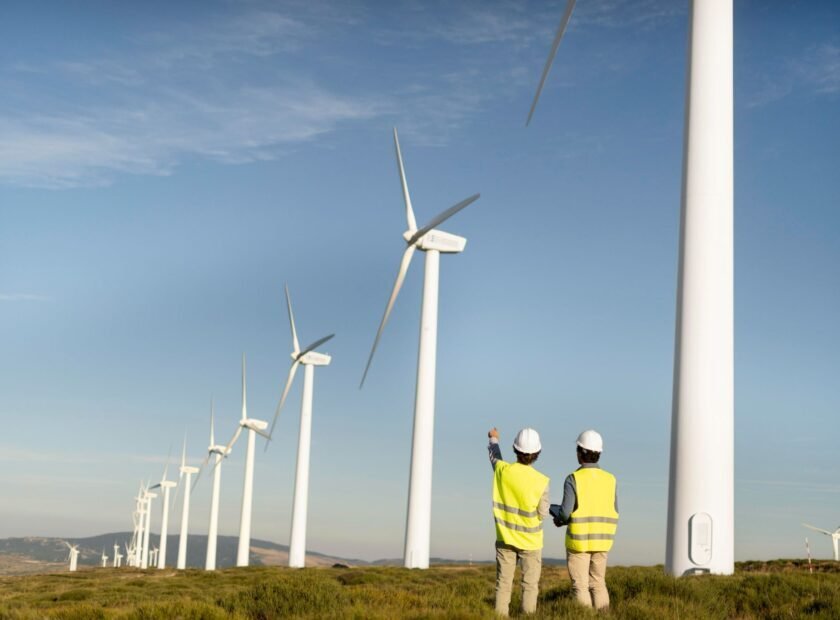Renewable energy sources offer a beacon of hope in the fight against climate change by replacing fossil fuels in power generation, transportation, and other sectors. The magic of solar, wind, hydro, and geothermal energy lies in their ability to reduce carbon footprint and greenhouse gas emissions, leading to a cleaner, healthier environment. In this blog, we’ll explore the changing landscapes of renewable energy and how to navigate them successfully.
In the present-day world, climate change is a rapidly worsening environmental condition that affects every country, including India. With a booming population and industries, natural resources are depleting at an alarming rate. According to the Global Climate Risk Index 2021, India ranked seventh among the countries most affected by climate change between 2000-2019. To combat this, opting for natural sources of energy is crucial. The renewable energy businesses in India are bringing about much-needed change, but the challenge lies in making industries aware of the sector’s changing landscape and adapting to embrace the positive change.
1. Technological Advancements
Renewable energy sources are not just a buzzword; they are the key to unlocking a sustainable future for all. With solar energy taking centre stage in India, it’s time to harness the power of the sun and bring a new dawn of clean energy to the country.
Science & Technology is constantly evolving; and every year, the world witnesses new and innovative solutions in the renewable energy sector.
In India, the power of the sun reigns supreme, especially in rural areas with limited access to electricity. With a target to achieve 175 GW of renewable energy capacity by 2022, of which 100 GW is to be from solar energy, India is powering towards a sustainable future.
The solar power energy business has seen an exponential rise, thanks to falling costs and government support through various policies and incentives. The abundant sunlight and favourable policies offer the perfect storm for solar energy to shine bright in meeting India’s energy needs while reducing its carbon footprint.
If you are planning your business to adapt to the best of renewable energy, then it is the most appropriate time to take a transition move.The sooner you make a move, the higher you reap benefits since it is the future and today or tomorrow one will be required to shift
2. Government Policies
The growing concern around the depletion of fossil fuels has led the Government to bring in some actionable processes in the policies and regulations for renewable energy industries. Then be it in the form of incentives and tax breaks or mandates and regulations, the government is taking every possible step to encourage industrialists to go solar.
India is taking a bold and visionary step towards a sustainable future with its commitment to achieve net zero emissions by 2070 and generate half of its electricity from renewable energy sources by 2030. This groundbreaking move positions India as a global leader in the fight against climate change and sets a powerful example for other developing nations. By embracing green energy and rejecting outdated, polluting practices, India is forging a brighter and more prosperous future for its citizens and the world.
Additionally, The growth of solar, wind, EVs, heat pumps and energy efficiency has helped limit the increase of global energy-related carbon dioxide emissions by under 1% in 2022, according to a new analysis from the IEA. This is a far cry from the exceptional jump of over 6% in 2021, but we’re not out of the woods yet. Emissions are still on an unsustainable growth trajectory, and we need stronger actions to accelerate the clean energy transition and meet our energy and climate goals. To help achieve this, the IEA has launched the Global Energy Transitions Stocktake, a new series of reports that bring together the latest analysis in one place and make it freely accessible.
As an industrialist, you surely would want to stay ahead of the game, and for that, it’s crucial to stay up-to-date with the latest government policies and regulations of the energy business.
Let’s make sure we’re on the right track towards a cleaner and greener future!
3. The Competition
Renewable energy businesses are becoming increasingly competitive with improving technology, new players entering the market and the existing players expanding their offerings. As businesses, industries, and MSMEs embrace renewable energy, they are becoming more competitive and innovative in the market. With cutting-edge technology and new players entering the game, renewable energy companies are expanding their offerings and specialising in specific energy technologies such as solar and wind power.
From turnkey solutions that include energy generation and storage to building fully integrated energy parks, the possibilities are endless! As the world shifts towards a sustainable future, businesses that embrace renewable energy are not only saving the planet but also reaping the rewards of a thriving green economy.
With the adoption of renewable energy sources, industries, manufacturers, and MSMEs have become more energy independent. Additionally, with the increasing demand for sustainable products, businesses that use renewable energy can appeal to eco-conscious consumers, giving them a competitive edge in the market. As a result, more and more businesses are recognizing the benefits of renewable energy and are making the switch to stay competitive and ahead of the curve.
Key Takeaways:
The winds of change are blowing, and renewable energy is leading the charge!
With the ever-changing landscapes of renewable energy, industrialists need to navigate the latest trends & technologies, government policies, and market competition. The future of renewable energy seems to be growing here on;
Are you ready to future-proof your business and drive sustainability? Partner with Solark today and lead the transition to renewable energy – the smartest decision you’ll make for long-term competitiveness.



